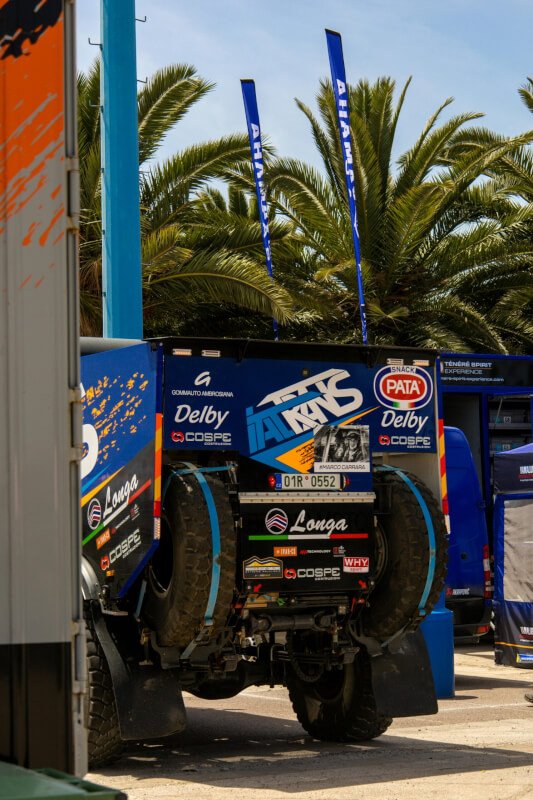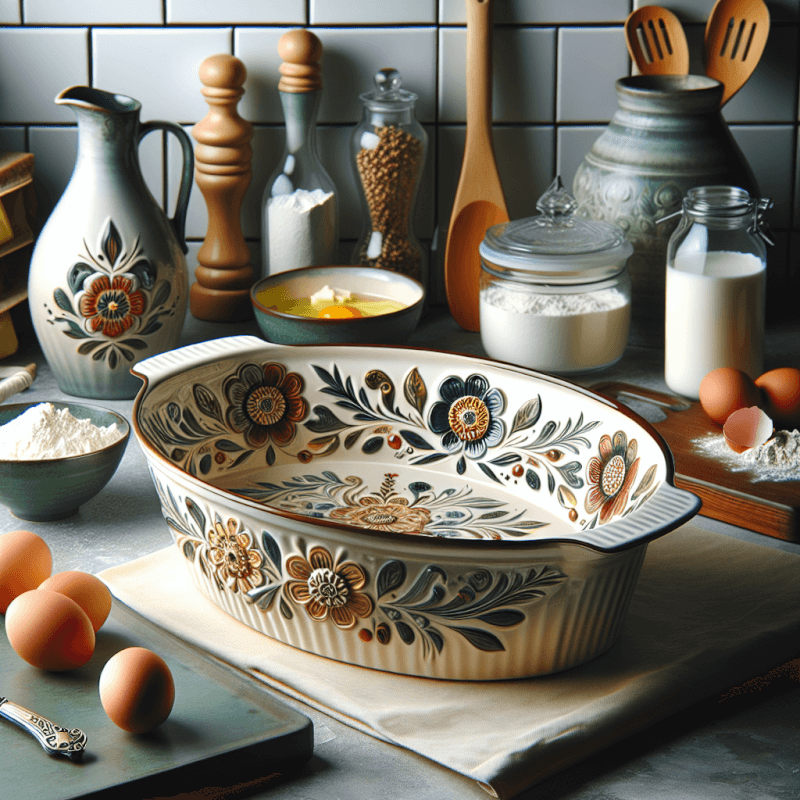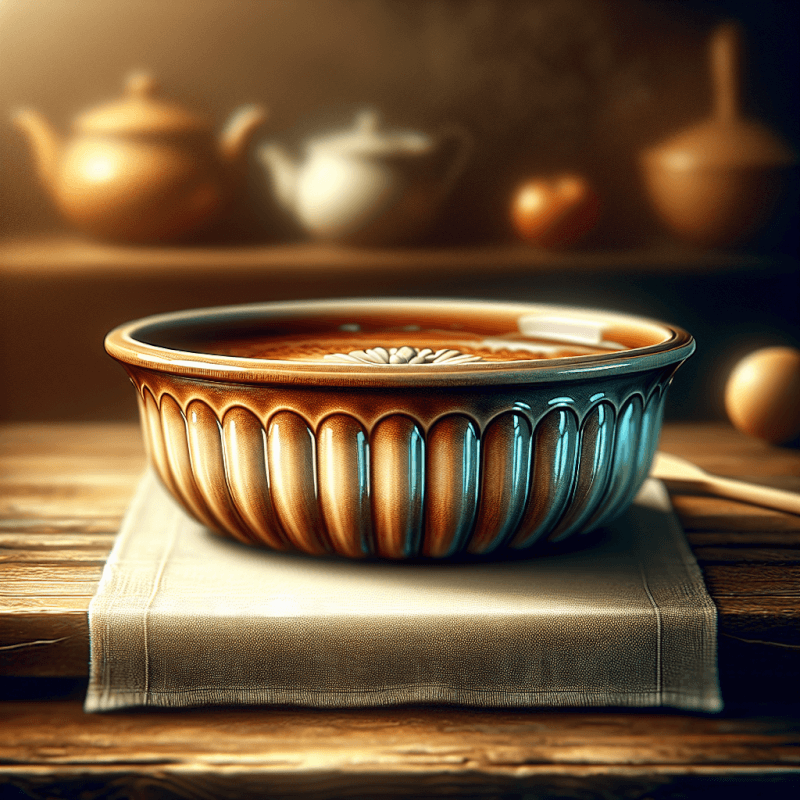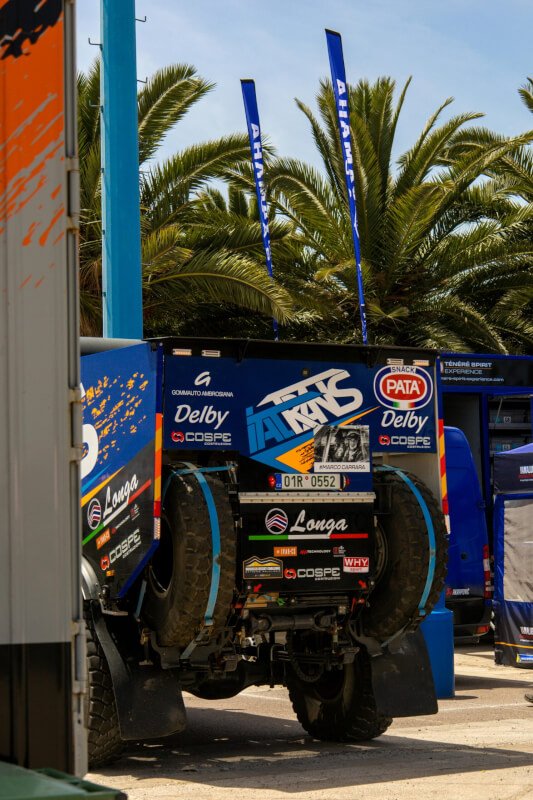Are you tired of your cookies sticking to the pan or your cakes coming out unevenly baked? Look no further! In this article, you will discover the ultimate guide to choosing the best bakeware material for all your baking needs. From non-stick to stainless steel, we will explore the pros and cons of each option, helping you make a decision that will elevate your baking game to the next level. Say goodbye to burned bottoms and soggy centers – it’s time to find the perfect bakeware material for your kitchen.

Overview
Bakeware refers to the various types of kitchen utensils used for baking, such as pans, dishes, and molds. These essential tools are designed to withstand high temperatures and evenly distribute heat to ensure that your baked goods come out perfectly every time. Choosing the right bakeware material is crucial to achieve the best results. Different materials offer different advantages and disadvantages, so it’s important to understand how each one performs in order to make an informed decision.
Types of Bakeware Materials
Glass bakeware
Glass bakeware is a popular choice among bakers due to its excellent heat conduction properties. It allows for even heat distribution, ensuring that your baked goods cook evenly. The transparent nature of glass also allows you to monitor the browning and doneness of your baked treats. However, glass bakeware can be fragile and is at risk of breaking if exposed to sudden temperature changes.
Ceramic bakeware
Ceramic bakeware is known for its elegant and versatile properties. It retains heat well and heats up slowly, ensuring that your baked goods are cooked evenly. Ceramic bakeware is also aesthetically pleasing, making it ideal for serving dishes directly from the oven to the table. However, it can be heavy and prone to chipping or cracking if mishandled.
Aluminum bakeware
Aluminum bakeware is a lightweight and affordable option that is excellent for heat conductivity. It ensures quick and even baking, resulting in evenly cooked baked goods. Aluminum bakeware is also rust-resistant and durable, making it ideal for regular use. However, aluminum is a reactive material, which means that certain acidic ingredients can cause a chemical reaction, altering the taste and appearance of your baked goods.
Silicone bakeware
Silicone bakeware is a flexible and non-stick option that offers great convenience in the kitchen. It is lightweight, easy to store, and can withstand high temperatures without warping or melting. Silicone bakeware is also dishwasher safe and requires minimal greasing or oiling. However, it is not as sturdy as other materials and can be easily damaged by sharp utensils.
Stainless steel bakeware
Stainless steel bakeware is known for its durability and excellent heat retention properties. It is resistant to corrosion and stains, making it a long-lasting option. Stainless steel bakeware is also non-reactive, ensuring that your baked goods maintain their original flavors and colors. However, stainless steel is not the best conductor of heat, so baking times may need to be adjusted.
Cast iron bakeware
Cast iron bakeware is known for its unparalleled heat retention and even heat distribution properties. It can withstand extremely high temperatures, making it perfect for baking crusty bread or deep-dish pizzas. Cast iron bakeware also develops a natural non-stick surface over time with proper seasoning. However, it requires regular maintenance to prevent rust and can be heavy and difficult to handle.
Factors to Consider
When choosing the right bakeware material for your needs, several factors need to be considered.
Heat conductivity
Different materials have varying heat conductivity properties. Some materials, such as glass and ceramic, distribute heat evenly throughout the pan, while others, like stainless steel and cast iron, may have hot spots or slower heating times. Consider the specific requirements of your recipes and baking techniques to determine the most suitable heat conductivity.
Durability
The durability of your bakeware is essential to ensure long-lasting use. Some materials, like stainless steel and cast iron, are highly durable and resistant to corrosion, while others, such as glass and ceramic, may be more prone to breaking or chipping. Consider how often you will be using the bakeware and how well it can withstand regular wear and tear.
Non-stick properties
The non-stick properties of bakeware can greatly affect your baking experience. Some materials, like silicone and non-stick coatings on aluminum pans, offer excellent non-stick capabilities, making it easy to release your baked goods. Other materials may require greasing or flouring to prevent sticking. Consider the level of convenience and ease of use you desire when selecting your bakeware material.
Maintenance and cleaning
Different materials require different levels of maintenance and cleaning. Some may be dishwasher safe, while others may need to be hand washed or require special cleaning methods. Consider how much time and effort you are willing to invest in maintaining your bakeware and choose a material that aligns with your cleaning preferences.
Cost
Bakeware comes in a wide range of prices, depending on the material and brand. Consider your budget and the value you attach to the longevity and performance of your bakeware. Cheaper options may be more affordable initially but may not last as long, while higher-end options may require a larger investment but offer superior quality and durability.
Glass Bakeware
Glass bakeware has several advantages that make it a popular choice among bakers. Firstly, glass provides excellent heat distribution, resulting in even baking and consistent results. It allows you to see the browning and doneness of your baked goods, giving you better control over the cooking process. Glass bakeware is also non-reactive, ensuring that your cakes, cookies, and other treats maintain their original flavors. Additionally, glass is a durable and long-lasting material when handled properly.
However, glass bakeware also has a few disadvantages to consider. It can be fragile and is susceptible to breaking if subjected to sudden temperature changes. Extreme temperature variations, such as taking it from a hot oven and placing it on a cold surface, can cause glass to shatter. Glass bakeware may also take longer to heat up, potentially increasing baking times. Finally, glass can be challenging to clean, as it tends to retain grease and stains.

Ceramic Bakeware
Ceramic bakeware offers a unique combination of elegance and functionality. It provides excellent heat retention, ensuring even baking and consistent results. Ceramic also heats up slowly, allowing for gradual cooking and preventing hot spots. This material is perfect for dishes that need to stay warm for extended periods. Furthermore, ceramic bakeware is visually appealing and can be used as serving dishes directly from the oven to the table.
Despite its advantages, ceramic bakeware has a few drawbacks. It can be heavy, making it challenging to handle, especially when filled with food. Ceramic is also prone to chipping or cracking if mishandled or dropped, so it requires careful use and storage. Additionally, some ceramic bakeware may have a naturally porous surface, which can absorb oils and flavors over time, potentially affecting the taste of future baked goods.
Aluminum Bakeware
Aluminum bakeware is a popular choice for many home bakers due to its affordability and excellent heat conductivity. Aluminum pans heat up quickly and distribute heat evenly, resulting in uniformly baked treats. They are also lightweight and easy to handle, making them a versatile option for everyday baking. Aluminum bakeware is rust-resistant and durable, ensuring long-lasting performance.
However, aluminum is a reactive material, which means that certain acidic ingredients, such as tomatoes or citrus, can cause a chemical reaction and alter the taste and appearance of your baked goods. To prevent this, it is recommended to line aluminum pans with parchment paper or use a non-stick coating. Additionally, aluminum bakeware may warp with repeated use at high temperatures or in the dishwasher, so hand washing is often recommended to maintain their shape.

Silicone Bakeware
Silicone bakeware has gained popularity in recent years due to its convenience and versatility. It is a flexible material that makes it easy to release baked goods without the need for greasing or flouring. Silicone is also non-stick, preventing your cakes, cookies, and muffins from sticking to the pan. It can withstand high temperatures without warping or melting, making it perfect for baking and freezing. Silicone bakeware is also lightweight and easy to store, taking up minimal space in your kitchen.
However, there are a few disadvantages of using silicone bakeware. The flexibility of silicone pans can make them challenging to handle, especially when filled with batter. They may require additional support, such as a baking sheet, when transferring them in and out of the oven. Additionally, silicone bakeware is not as sturdy as other materials and can be easily damaged by sharp utensils. Careful handling and storage are necessary to prevent tears or punctures.
Stainless Steel Bakeware
Stainless steel bakeware is known for its durability and excellent heat retention properties. It is resistant to corrosion, stains, and rust, ensuring that your bakeware will last for years to come. Stainless steel pans distribute heat evenly, resulting in even baking and consistent results. They are also non-reactive, which means that your baked goods will maintain their original flavors and colors. Stainless steel bakeware is easy to clean and dishwasher safe, making it a convenient choice for busy bakers.
However, stainless steel is not the best conductor of heat, so baking times may need to be adjusted accordingly. Preheating the pan and allowing for longer cooking times may be necessary to achieve desired results. Stainless steel bakeware can also be more expensive than other options in the market, but the investment is often worth it due to its longevity and performance.

Cast Iron Bakeware
Cast iron bakeware is a favorite among professional bakers and cooking enthusiasts for its unparalleled heat retention and even heat distribution properties. Cast iron pans can withstand extremely high temperatures, making them perfect for baking crusty bread or deep-dish pizzas. They effectively retain heat, ensuring that your baked goods stay warm for longer periods. Over time, cast iron bakeware develops a natural non-stick surface with proper seasoning, requiring less oil or grease for baking.
However, cast iron bakeware requires regular maintenance to prevent rust and maintain its non-stick properties. It should be seasoned and dried thoroughly after each use to prevent moisture from causing damage. Cast iron pans can be heavy and cumbersome to handle, making them less suitable for those with strength or mobility issues. Additionally, their weight can increase the risk of dropping or mishandling the bakeware.
Conclusion
Choosing the best bakeware material for your needs requires careful consideration of various factors. Each material offers its own advantages and disadvantages when it comes to heat conductivity, durability, non-stick properties, maintenance, and cost. Glass bakeware is an excellent option for even heat distribution and transparency, while ceramic bakeware adds an elegant touch to your table. Aluminum bakeware is affordable and efficient, while silicone bakeware offers convenience and ease of use. Stainless steel bakeware is durable and non-reactive, while cast iron bakeware provides unparalleled heat retention. Assess your baking preferences, requirements, and budget to make an informed decision and select the ideal bakeware material to create delicious treats for years to come.



